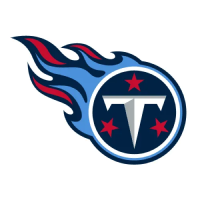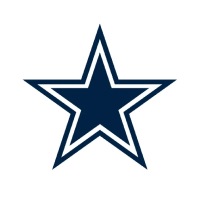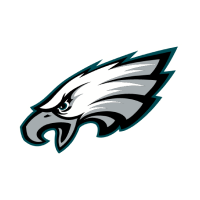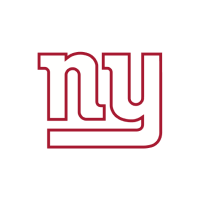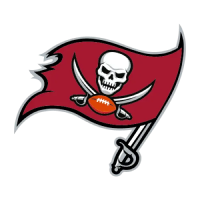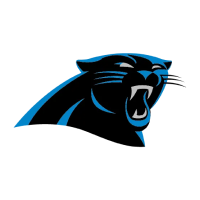The Miami Dolphins entered the 2021 NFL season with something they hadn’t had in quite some time as a franchise: momentum. The Dolphins were supposed to be one of the NFL’s worst teams of all-time in 2019, but they went 5-4 over their final nine contests that year before loading up on draft picks, spending a ton of money in free agency, and pushing their record to 10-6 in 2020. In both instances, head coach Brian Flores’ team overachieved the national consensus by a handful of wins, if not more. So with a young quarterback entering into his second season in the league, a bevy of speed at his disposal on the perimeter, and a slew of offensive linemen entering into their second or third seasons as well, Miami’s youth movement on offense appeared ready to pair with their top defense from 2020—one that was also retooled with significant additions to push Miami into contender status.
Not so fast.
Miami sits at 1-3 through four games after seeing Tua Tagovailoa knocked from the field with broken ribs in Week 2. He’s reportedly set to return in Week 6 against the Jacksonville Jaguars, but Miami’s problems extend well beyond the absence of their second-year quarterback.
There’s been musical chairs played up front on the offensive line and the team stubbornly refuses to consider that 2020 first-round tackle Austin Jackson needs to be removed from his post. Jackson, who was active but did not play in Week 1 with the exception of the field goal team after missing the entire week of practice due to COVID-19 protocols, leads the NFL in pressures conceded (20) despite playing just three games at tackle. He’s also one of just three NFL offensive linemen to already be charged with three penalties this season (others have surpassed that number but have had the penalty declined or offset).
2020 first-round draft selection Noah Igbinoghene, meanwhile, can’t even see the field. He was drafted at No. 30 overall by the Dolphins and has been a healthy scratch in multiple games in Year 2.
And so the world turns.
Miami’s marquee draft class of their rebuild has soured on them; there’s no question of that. Is there still time for the narrative to change? Yes, of course. And it very well could for a number of the talents in question. But there should not be a lot of optimism that this group is going to breathe life into a season that’s fallen flat here in 2021—and heads may well roll because of it. And, quite frankly, they should. This is the risk Miami took when they embraced a “draft and develop” mentality from the jump back in 2019. Any decision-maker must know that he’s going to have to bat at a higher average with his choices than the standard expectation across the league to rapidly raise a team into contention because busts absolutely do happen—and Miami appears to be at risk of eating several of them at the top of their class from 2020.
Now, to Chris Grier’s credit, the 2021 class is looking like much more of a boom, as rookies Jaylen Waddle, Jaelan Phillips, Jevon Holland, and Liam Eichenberg have all been prominent contributors early on. All have flashed ample promise, too—Waddle’s production has been forced to some degree, but he’s certainly open much more often downfield than he’s receiving targets. Jaelan Phillips has shown up for Miami big time over the last two weeks in a bigger role, Holland is getting run as a high-post player, and Eichenberg played well in his debut at left tackle in Week 1 before being kicked over to right tackle to accommodate Jackson.
But it may well be too little, too late for Grier. Because in addition to a 2020 hallmark class of three top-30 choices that are all offering little clarity, Miami doubled down on some of the problematic areas on the field by staying unquestionably committed to their youth.
Use the offensive line as an example. Miami’s utopian world this summer had the Dolphins scheduled to start Jackson, Solomon Kindley, Michael Deiter, Robert Hunt, and Eichenberg along the line—five players who are in their first, second, or third NFL season and none of which entered the 2021 season with more than 15 starts under their belt. And the one with 15 starts was Deiter, with those 15 starts coming as a rookie in 2019 at left guard, not at center. Could it have worked? Sure, absolutely. If you had Dante Scarnecchia or Mike Munchak on the case to coach the offensive line. Head coach Brian Flores, however, has a first-year offensive line coach in 34-year-old Lem Jeanpierre leading the unit.
And there lies the biggest error in Miami’s methodology. There’s youth and inexperience everywhere. At quarterback, on the offensive line, in critical roles on defense, and in the coaching staff. There’s zero stability.
Miami jettisoned several team leaders from the 2020 roster into the abyss this offseason, including quarterback Ryan Fitzpatrick, offensive guard Ereck Flowers, linebacker Kyle Van Noy, and safety Bobby McCain. Yes, there were X’s and O’s and salary cap justifications for their departures, but the new end result in Miami is a roster loaded with inexperience; which in turn invites high-variance play from too many major contributors on a play-by-play, possession-by-possession, and week-by-week basis.
And that’s what makes the task of fixing what is wrong in Miami so daunting. Because where do you even start? How can you possibly isolate the root of the problem when everyone and everything is working through growing pains? Miami can’t possibly claim to know what they have in players up and down the depth chart.
And this doesn’t even get into the systemic issues at play for the Dolphins. Their offensive coaching staff feels like a chemistry experiment gone awry. There are co-offensive coordinators between coaches George Godsey and Eric Studesville; presumably with a pass-game and run-game focus during the week of game planning. And then there’s quarterbacks coach Charlie Frye, another first-year NFL coach. He’s the voice in the headset of the quarterback on Sunday afternoons—meaning Miami must play “whisper down the alley” from whoever is making the calls (it has been presumed to be Godsey by both Bill Belichick and Jon Gruden) to the ear of the quarterback. Flores insists that the system isn’t the problem.
“I like the system we have in place. Obviously, we haven’t had the success we want or the production that we are looking for. I like our process during the week. I like our preparation. I think we’ve had some good plans going in, we just haven’t been able to execute and we are not getting the results we want,” said Flores on Monday after a 27-17 loss to Indianapolis that was much more painful on offense than the score would indicate.
“I think from that standpoint, I think the collaboration and the preparation, it’s not like I’ve gone into a game plan saying, ‘I don’t like what we’re doing.’ We just haven’t been able to execute.”
And, to be fair to Flores, he’s not totally wrong. Back-up quarterback Jacoby Brissett was abysmal on Sunday against the Colts, passing over wide-open targets early on in his progression in favor of scrambling around like a chicken with his head cut off. It’s impossible to know what Brissett’s thought process was on several missed reads; whether it was a slant/flat combination versus man coverage that Brissett passed on as Will Fuller streaked into the middle of the field with no one within several yards of him and no one capping his route or skipping on a deep cross from Jaylen Waddle in the middle of the field as DeVante Parker carried the high safety out of the frame in what appeared to be a “spear” concept variation with max protection and play-action to pull the linebackers into the line. Brissett seemed to stare down the throw before opting for a check-down in the flat for a marginal gain and passing on what could have been a 70-yard touchdown with Waddle’s speed after the catch and no one around. Brissett even passed on a free play to take a shot and checked the ball down on a rep in which the Colts were flagged for 12 men on the field.
So yes, Flores’ Dolphins have struggled to execute. They’ve regressed on defense too, with Flores offering critiques of his defense after their Week 3 overtime loss to the Las Vegas Raiders and suggesting that players aren’t executing their run fits in favor of freelancing and trying to make a play, abandoning their gap and allowing Miami to get gouged up front in critical moments.
But Miami’s coaching staff is not without their share of the blame. There are too many reps with three receivers closely bunched together 15 yards downfield, offering zero challenge to opposing defenses to cover the width of the field. There are instances of players running the wrong route, such as on Tagovailoa’s critical interception in Week 1 against the New England Patriots that nearly cost them the game—that was still an issue even in Week 4 against the Colts. Miami’s personnel usage at times has been questionable, too. Miami’s best running back, Myles Gaskin, took just 12 snaps against the Colts. Yes, he’s struggling in pass protection this season, but the alternative is a more heavy-footed runner in Malcolm Brown who offers little open-field challenge. Miami’s best defensive lineman is Emmanuel Ogbah—he played 52% of the snaps against the Colts. Meanwhile, linebacker Brennan Scarlett played nearly 40% of the snaps instead.
Miami prides itself on being “multiple.” They aspire to be a chameleon each and every week to meet the demands that the opposing team will challenge them with. But in doing so, Miami has fallen into the trap of not letting their best players stay on the field, which means they’re trusting the coaches to do the heavy lifting and scheme up the right answers. But whether it is the three-headed monster running the offense, the first-year offensive line coach, or even Flores himself, Miami has flubbed gameday execution just as much from a coaching perspective. When Flores first took over the team, he commanded his team to embrace the “TNT’s”: takes no talent. Know your assignment. Play hard. Play smart. Be disciplined. Communicate.
And yet here is Miami, in Year 3 of this regime, watching their punt returner elect not to field a kick at the 23-yard line and losing hidden yardage in the first half—only to watch the same return specialist muff another punt late in the game to gift the Colts points and push the game out of reach for the Dolphins. Watching a defender jump offsides on a 4th-and-3 punt (with no punt block called) to gift the Colts a first down and extend a drive that eventually resulted in seven points. Watching Flores opt not to trust 2020 first-team All-Pro kicker Jason Sanders to kick a 50-plus-yard field goal and instead play for field position in the first half and leaving points on the field. The Dolphins are tied for eighth in the NFL with 27 penalties called against them in four games. They had 74 called against them in all of 2020.
In short, the Dolphins find themselves a complete mess through the first four games of the season and much of it is self-induced. Whether it be Grier’s missed picks early on in 2020, the team’s decision to jettison their leadership group and offer little to no succession plan, the blind faith placed in the youth movement across the roster and the assumed development of key players that simply hasn’t happened, a regression in the absorption of the messaging from Flores, the lack of execution from a sixth-year pro at quarterback who was signed to offer Miami value in exactly this scenario as a short-term bridge amid an injury to Tagovailoa, a tangled web of variables trying to concoct an offensive game plan, or even the ongoing black cloud on the horizon amid ongoing rumors of interest in trading for Deshaun Watson that refuse to die, Miami has made quite the bed for themselves to lie in this season.
Sitting at 1-3, Miami’s season is on the brink. And, oh, by the way, they’re headed to Tampa to play the reigning world champion Buccaneers this Sunday. Maybe a little time is all this chemistry experiment needs to gel and get the Dolphins back on track. But time is running short and owner Stephen Ross was sold on a reconstruction plan in 2019 that certainly didn’t involve this many self-inflicted wounds at this point in the process. And Ross wasn’t exactly shy about where he expects his investment to go from here when the team opened their state-of-the-art training complex for training camp this season.
“When I bought the football team, one of the things I said was we want to do as much with the community as we possibly can, and we want to be the best in class in the NFL and we want to win the Super Bowl,” Ross said on stage at the event. “Well, I think we’re two-thirds of the way there.”
Miami couldn’t feel further from winning a Super Bowl right now if they tried. Best of luck to Ross, Grier, Flores, and the rest of the organization for isolating the biggest hurdles standing in their way, too. Because just about every dynamic of this team is an unknown and unproven variable—many by elective design.
Filed In
Related Articles
NFL Draft
Arik Gilbert Doesn’t Need Big Workload To Be A Top NFL Draft Pick
- Aug 22, 2022
NFL Draft
2023 NFL Mock Draft: Marino 1.0
- Aug 22, 2022
Written By









